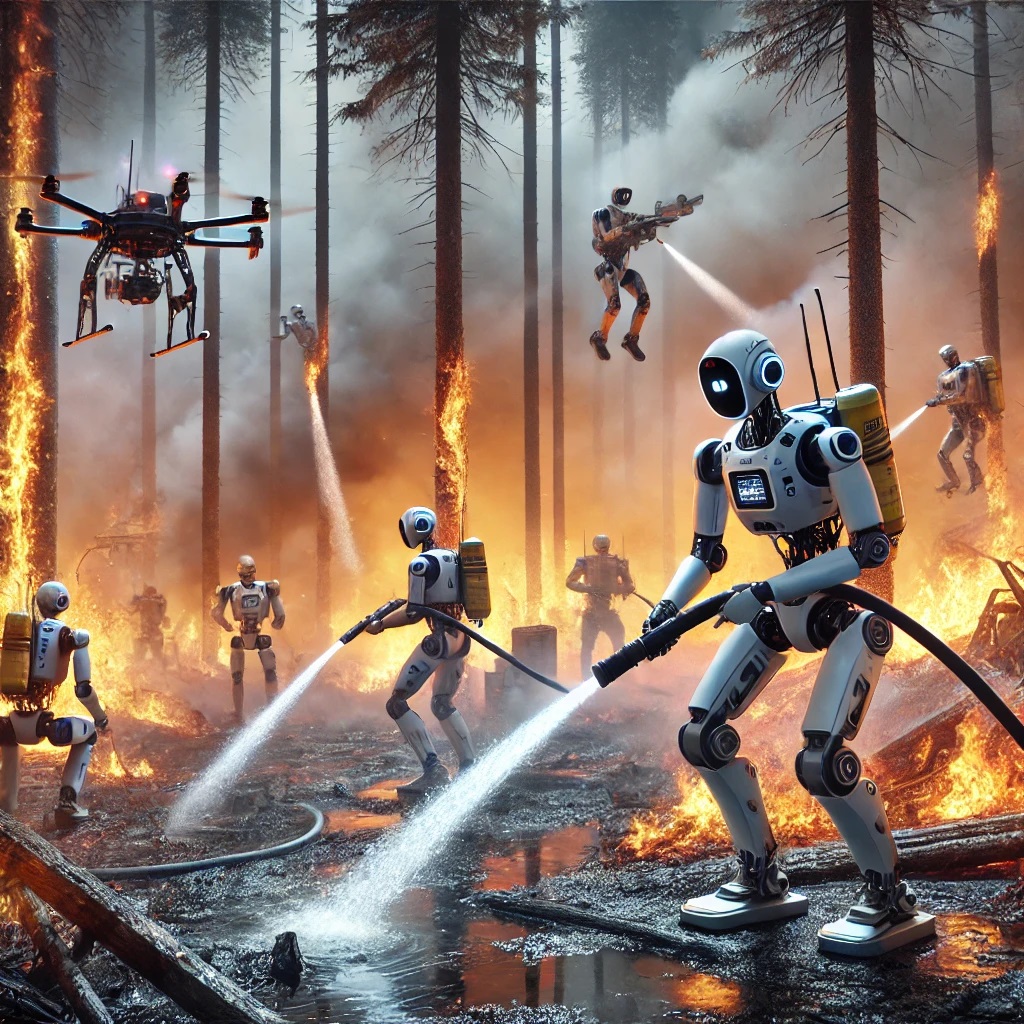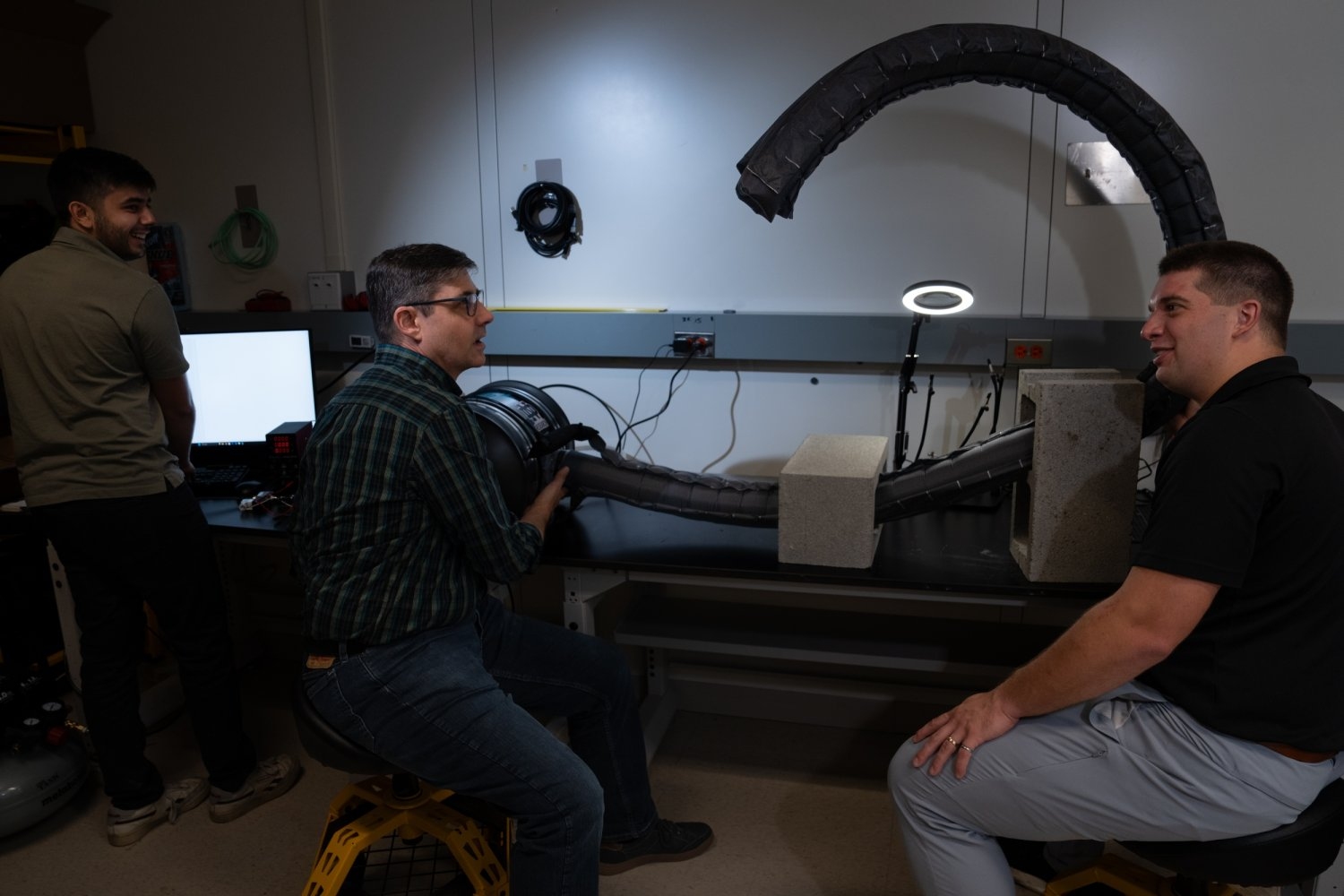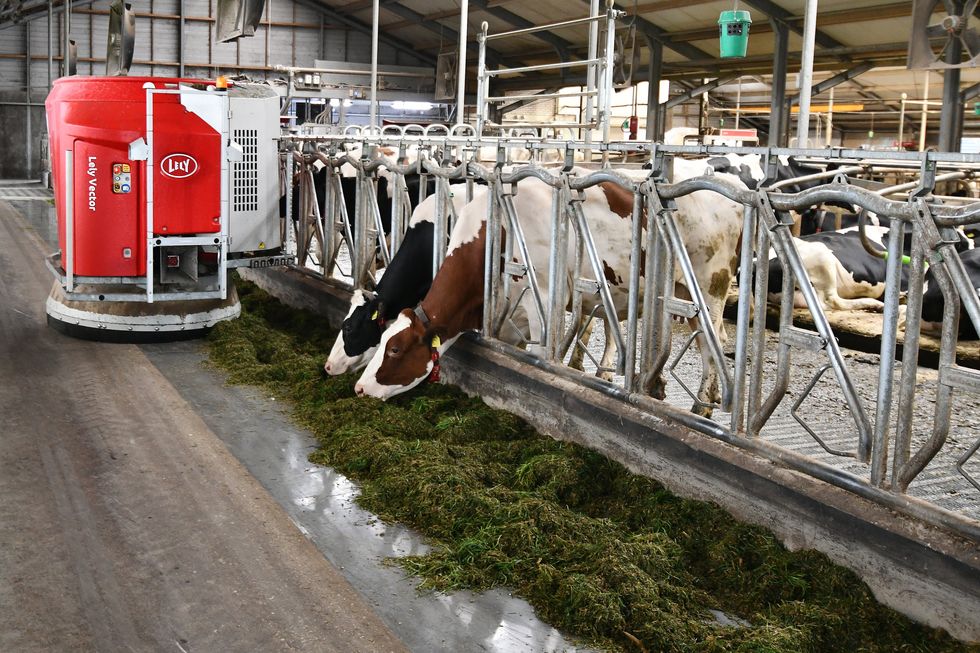Wildfires present a significant global challenge, causing devastating damage to ecosystems, infrastructure, and human lives. As climate change intensifies their frequency and severity, innovative solutions are essential. Humanoid robots 🤖 are emerging as transformative tools in wildfire management, offering unique capabilities to support prevention, active firefighting, and post-fire recovery. This post explores how humanoids can revolutionize wildfire management while addressing key concerns for CEOs, such as cost-effectiveness, scalability, and seamless integration into existing systems.
Search and Rescue Operations ⚡️
Firefighters’ Assistance
Humanoid robots 🤖 can navigate smoke-filled environments, collapsed structures, and challenging terrains to locate survivors. Equipped with advanced locomotion systems, they excel in hazardous conditions, performing tasks like crawling through debris or operating in zero visibility. These robots enhance safety and significantly improve rescue success rates.
Data Collection
Humanoids outfitted with cameras 📸, thermal sensors 🌡️, and analytics tools can detect heat sources, track fire progression, and gather real-time data. These insights empower firefighting teams to make informed, effective decisions.
Firefighting Capabilities 🚒
Fire Suppression
Humanoid robots can operate fire-extinguishing systems ⚡️ such as hoses or fire retardant dispensers in dangerous environments. They are particularly effective in hard-to-reach areas, such as steep inclines, dense forests, or zones with chemical hazards. By complementing human efforts, they reduce risks and enhance operational efficiency.
Flame Monitoring
With integrated thermal sensors 🌡️ and high-definition cameras 📸, humanoid robots can monitor fire growth, temperature changes, and smoke levels. This data boosts situational awareness, enabling teams to strategize effectively.
Handling Hazardous Materials 🚫
Dangerous Environments
Wildfires often release toxic substances like smoke, chemicals, and ash. Humanoid robots can safely enter these zones to collect samples, assess conditions, and perform tasks that are perilous for humans.
Precautionary Measures
Before wildfires occur, humanoid robots can inspect vegetation and monitor hazardous materials. Their assessments guide preventative measures, reducing the likelihood of ignition and spread.
Fire Prevention and Monitoring 🔦
Monitoring Remote Areas
Humanoids equipped with advanced sensors can patrol remote or inaccessible regions prone to wildfires. They monitor environmental conditions such as moisture levels, temperature, and vegetation health, identifying potential fire risks early.
Deploying Firebreaks
In wildfire-prone regions, humanoids can assist in creating firebreaks by clearing dry vegetation and reducing available fuel. Their precision and adaptability make them highly effective for this purpose.
Post-Fire Recovery 🌿
Damage Assessment
After a wildfire, humanoid robots can survey affected areas using aerial and ground-level imaging 🖼️ to assess damage to infrastructure, agriculture, and ecosystems. This data is invaluable for planning recovery efforts and securing funding or insurance claims.
Environmental Remediation
Humanoids can aid in replanting efforts, removing hazardous waste, and restoring damaged ecosystems. Their precise movements are ideal for delicate tasks such as planting saplings 🌳 or cleaning contaminated sites.
Strategic Considerations for managers 👨💼
Cost-Benefit Analysis: While the initial investment in humanoid robotics may be substantial, their ability to mitigate risk, enhance efficiency, and save lives can yield significant long-term savings.
Scalability: As robotic technology advances and becomes more affordable, the integration of humanoids into wildfire management can be scaled to meet regional and global needs.
Integration: Humanoids must seamlessly integrate with existing firefighting and disaster management systems. Managers should collaborate with software and hardware providers to ensure interoperability and robust data security.
Sustainability: Deploying humanoids aligns with corporate social responsibility goals, demonstrating a commitment to innovative and environmentally responsible solutions.
Conclusion ✨
Humanoid robots represent a transformative step in wildfire management, offering unparalleled capabilities in high-risk environments. From prevention to recovery, their potential impact is vast. For organizations aiming to invest in cutting-edge technologies, humanoid robots provide a strategic advantage by enhancing safety, efficiency, and environmental stewardship.
Refer to part 2 here if you are interested for more information
How useful was this post?
Click on a star to rate it!
Average rating 4.9 / 5. Vote count: 13
No votes so far! Be the first to rate this post.
We are sorry that this post was not useful for you!
Let us improve this post!
Tell us how we can improve this post?






This Post Has One Comment
Pingback: The Evolution of Robot Vacuum Cleaners